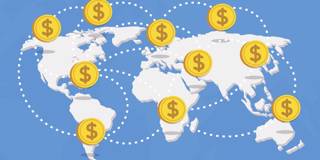Both developed and developing countries urgently need large-scale funding to help maintain economic activity and jobs during the current pandemic. Fortunately, more than 400 development banks around the world can play a vital role in minimizing economic decline, supporting recovery, and financing structural transformation.
NEW YORK/PARIS – There is no historical precedent for the current worldwide shutdown of most “non-essential” economic activities in response to the COVID-19 pandemic. Nor do policymakers have any experience of trying to engineer a smooth recovery after a shock of this magnitude. Clearly, however, governments now need to take responsibility. With markets having vanished or sharply contracted, the public sector has become the lifeline for millions of people and companies in distress.

NEW YORK/PARIS – There is no historical precedent for the current worldwide shutdown of most “non-essential” economic activities in response to the COVID-19 pandemic. Nor do policymakers have any experience of trying to engineer a smooth recovery after a shock of this magnitude. Clearly, however, governments now need to take responsibility. With markets having vanished or sharply contracted, the public sector has become the lifeline for millions of people and companies in distress.